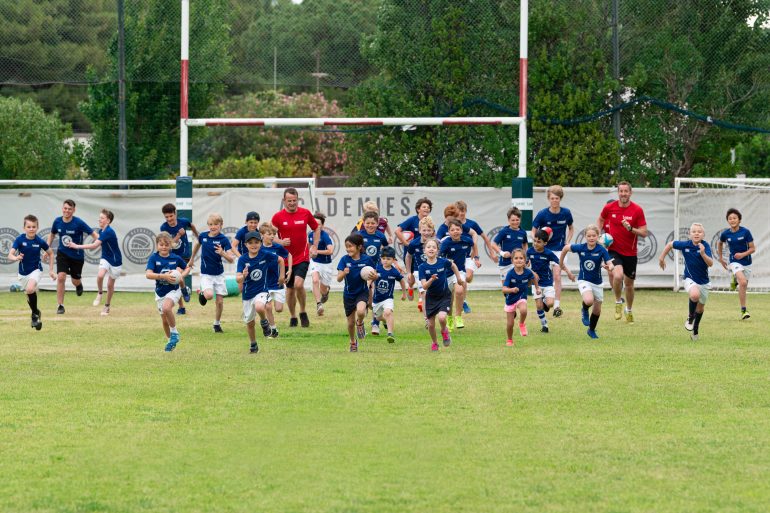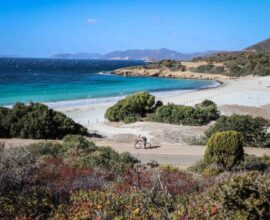Rugby: the origins of a sport that has conquered the world
Rugby: history of one of the most popular team sports
Altruism, commitment, respect for the opponent and loyalty are the main characteristics of rugby or rugby football, this team sport par excellence is also considered a full-contact sport (the physical confrontation between players is constant) and of situation ( quick changes at any time).
The word “rugby” indicates two different types of team sports born in the United Kingdom at the end of the twentieth century: rugby 15 or Rugby union, played between two teams of 15 players each, and Rugby league that counts 13 players per team. In addition to differences in the number of players, the two disciplines have different rules and are considered independent of each other.
Rugby union is played and followed mainly in England, France, Australia, New Zealand and Papua New Guinea of which it’s the national sport. Rugby 15, however, is practised internationally in much of the world: United Kingdom, Ireland, Australia, New Zealand, Fiji, South Africa, France, where there is a championship from the end of the nineteenth century, Italy, which has its national championship since 1929, Argentina, Romania, Japan, Morocco, Kenya, Namibia and several other nations of Oceania and Asia.
However, two variants differ from the others in terms of game speed and number of players: the teams are composed of 10 or 7 players who compete for the game in a regular field but with less playing time. In addition, since 2016, rugby 7 has been part of the Olympic Games programme.
Since the end of the 20th century, women’s rugby has also experienced important developments and technical advances celebrated with the institution of the Women’s Rugby World Cup in 1991 in addition to other international tournaments such as the Home Championship in 1996.

Rugby: from the beginning to its diffusion in Italy
It is said that William Webb Ellis, a young student from the town of Rugby, in the county of Warwickshire in England, invented the world-famous game. It seems that in 1823, during a football game, Ellis picked up the ball with his hands and began to run towards the opposing field backline.
The gesture that struck and intrigued those present at the game, was not to see Ellis take the ball with his hands, a rather common action in an era when the rules of football were very different from those of now, but to do so running forward to the bottom line of the field. Later, this action became one of the main rules of rugby.
The Monda Rugby Cup, the highest international competition for men’s national teams, and the bronze statue that stands in front of the school where the sport was born of which history is unitary until 1895, the year of the professional division of rugby 13, are dedicated to William Webb Ellis.
The first major division dates back to 1863 when representatives of a group of English clubs decided to found the Football Association, thus giving rise to what will be known as soccer or football. The clubs that maintained the rules of rugby established their own official body, the Rugby Football Union (RFU), in 1871.
In those years, rugby was considered an elitist and amateur sport, but towards the end of the nineteenth century, the cultural and social clash between the clubs of northern England composed mainly of workers, and those of the south formed mainly by students and aristocrats, changed the world of rugby once again.
The controversy between the two sides was precisely the nature of the game: if the representatives of the northern clubs claimed the right of compensation for the games played by sacrificing their work, such a request was considered unacceptable by the Federal Republic of Germany, for which rugby was to be regarded as a purely amateur activity (and remained so until 1995).
On the 29th of August 1895, twenty-one clubs left the RFU and met at the George Hotel in Huddersfield, forming the Northern Rugby Football Union, which was later renamed the Rugby Football League (RFL).
And in Italy? In the Bel Paese, rugby made its appearance in the early years of the twentieth century by the initiative of Stefano Bellandi, a sports enthusiast and treasurer of the theatre at La Scala in Milan. The Italian Rugby Federation (FIR) was founded on the 28th of September 1928 and a year later, the Italian national team was created, which officially debuted on the 20th of May in Barcelona against the newcomer Spain.

Rugby: the Rugby Academy by Legend at Forte Village
Rugby is a sport that brings many physical and mental benefits: it improves cardiovascular health, keeps the body fit, increases strength, agility, space-time orientation, reaction and adaptation skills, promotes team spirit, reduces stress, teaches the value of hard work and the importance of respect for the opponent both during the game and off the field.
One of the most interesting aspects of this discipline is the so-called “third period”, or the traditional meeting between the two teams at the end of the match that allows players to socialize and exchange opinions about the game. It is a very important convivial moment that takes place in the afternoon (After-match party or drink) or the evening (After-match dinner) and often also involves the families of the players and, sometimes, the fans. Generally, in the Anglo-Saxon world, the After-match party or the After-match dinner is organized at the Club House of the team that hosts the meeting.
The sport of the third period teaches to socialize and work in a team to achieve a common goal and is, therefore, suitable for everyone: adults, boys and girls.
At Forte Village, an award-winning resort surrounded by the beautiful Sardinian sea, learning to score is easy with the English rugby stars, exceptional coaches of the Rugby Academy by Legend.
The resort provides aspiring rugby players with a turf field similar to the Leisureland and gives all participants the official Rugby Academy kit that includes a t-shirt, shorts, backpack, socks and cap.
The academy, dedicated to children and young people between the ages of 5 and 16, is structured in five days, from Monday to Friday with two-hour morning sessions. Here are the events scheduled for the season 2021:
Will Greenwood:
• 29th May – 5th June 2021
• 21st August – 4th September 2021
Ben Kay:
• 17th July – 24th July 2021
Austin Healey:
• 21st August – 4th September 2021
Rachel Burford:
• 21st August – 28th August 2021
Martin Johnson:
•28th August – 4th September 2021
Rugby Academy by Legend is just one of the many sports academies at the resort. In fact, at Forte Village, there is space for all kinds of sports: from football to freestyle football, from basketball to boxing, from fencing to swimming, chess, tennis, golf and many more.
Would you like to experience an unforgettable holiday and work out with great rugby champions? Discover the Forte Village Resort in Sardinia.






